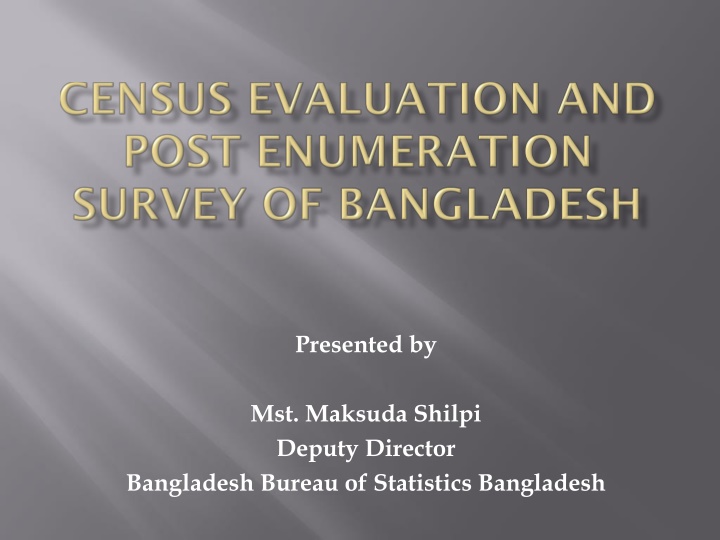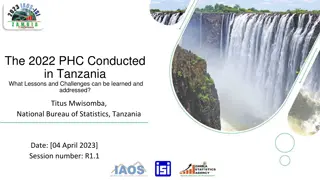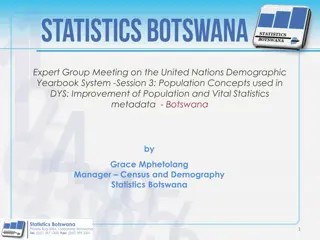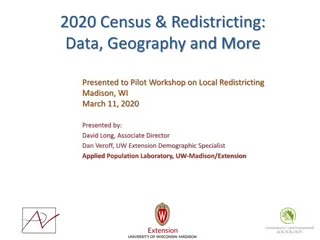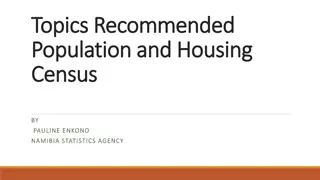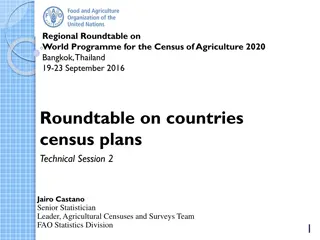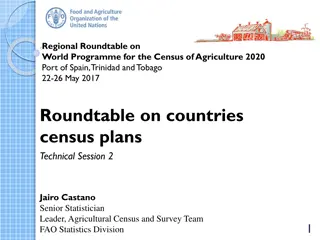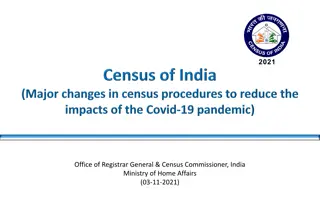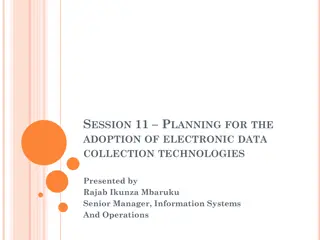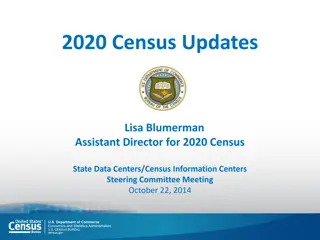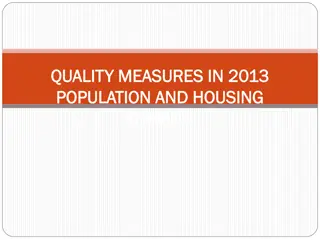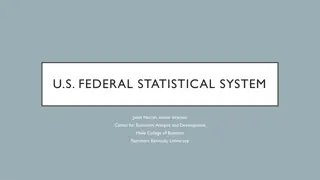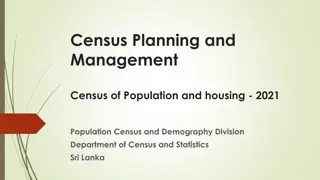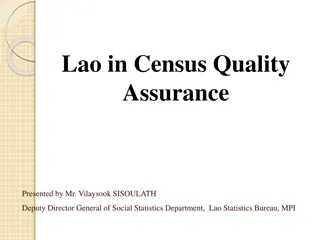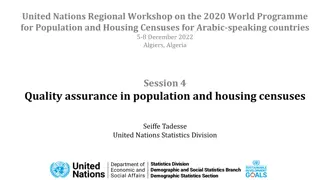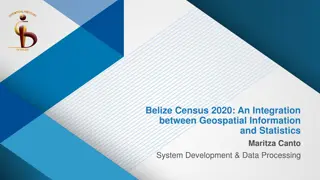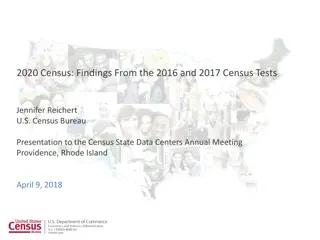Decennial Census Conducted by Bangladesh Bureau of Statistics
The Bangladesh Bureau of Statistics conducted the 5th decennial census of Bangladesh in March 2011 to gather updated and comprehensive population data. The census aimed to count all residents, analyze socio-economic characteristics, and assess census quality through surveys like the Post Enumeration Check. Enumerators played a crucial role in data collection using a two-way stratification design. Matching operations were executed to verify enumeration accuracy.
Download Presentation

Please find below an Image/Link to download the presentation.
The content on the website is provided AS IS for your information and personal use only. It may not be sold, licensed, or shared on other websites without obtaining consent from the author.If you encounter any issues during the download, it is possible that the publisher has removed the file from their server.
You are allowed to download the files provided on this website for personal or commercial use, subject to the condition that they are used lawfully. All files are the property of their respective owners.
The content on the website is provided AS IS for your information and personal use only. It may not be sold, licensed, or shared on other websites without obtaining consent from the author.
E N D
Presentation Transcript
Presented by Mst. Maksuda Shilpi Deputy Director Bangladesh Bureau of Statistics Bangladesh
The Bangladesh Bureau of Statistics will conduct the 5thdecennial census of Bangladesh in 15-19 March, 2011. The population census of the country is significant as it is the source of reliable, updated and comprehensive data about the size of the population of the country. Its distribution over different administrative units and the various socio-economic and demographic characteristics of the population. The main objective of the census is to count all the population residing in the territory of Bangladesh at a point of time.
The Post Enumeration check (PEC) survey was conducted during February 20-29, 2001 mainly for an independent evaluation of quality and coverage of the main census conducted during January 23-27, 2001.
The Principal objective of the PES was to estimate the magnitude of both positive and negative corerage errors. A Second objective of PES was to provide indications of the quality of enumeration collected in the census.
Enumerators and Supervisors were the employees of Bureau of Statistics specifically assigned for the job. They were not involved in the main census in these areas. The location of the 280 EAS were kept secret from all census field staff. PES enumeration started after receipt of all the field in schedules of the main census from the field. Each of the PES enumeration was supplied a map of the sample EA.
The sample had a two way stratification design. The primary stratification was the grouping of EAS by Rural, other urban municipality, SMA. The second stratification by geographical locations with in each primary stratum.
In matching operation, all persons enumerated in PES were clarified as either (i) correctly enumerated in the census (matched) on. (ii) tentatively missed a set of matching rules was developed and each EA Person was independently matched twice by two different matchers. This operation was done to estimate the number of erroneously enumerated persons included in the census and also to verify the persons who were clarified as tentatively missed were really missed.
We are planning to conduct a PES as part of our 2011 round census. The census date 15-19 March, 2011 and PES date 15-19 April, 2011.
